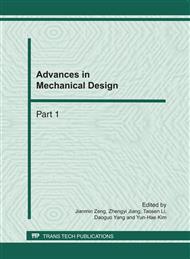p.1920
p.1924
p.1928
p.1932
p.1936
p.1940
p.1945
p.1949
p.1954
Effect of Cu/In Ratio on Properties of CuInS2 Films Prepared by Ultrasonic Spray Pyrolysis Method
Abstract:
CuInS2 thin films were prepared on heated glass substrates by ultrasonic spray pyrolysis method. Structure, surface morphology and properties of films with different Cu/In ratios have been investigated. X-ray diffraction (XRD) analysis demonstrated that as-prepared CuInS2 thin films with chalcopyrite structure have a preferential orientation along the (112) direction. SEM study shows films are relatively dense and smooth, but the much bigger grains and the large coherent agglomerates appear in films (Cu/In>1.25) due to the appearance of phase Cu2S. CuInS2 thin film (Cu/In=1.25) has a strong visible absorption and its energy band gap comes up to 1.45eV.
Info:
Periodical:
Pages:
1936-1939
Citation:
Online since:
February 2011
Authors:
Keywords:
Price:
Сopyright:
© 2011 Trans Tech Publications Ltd. All Rights Reserved
Share:
Citation:


